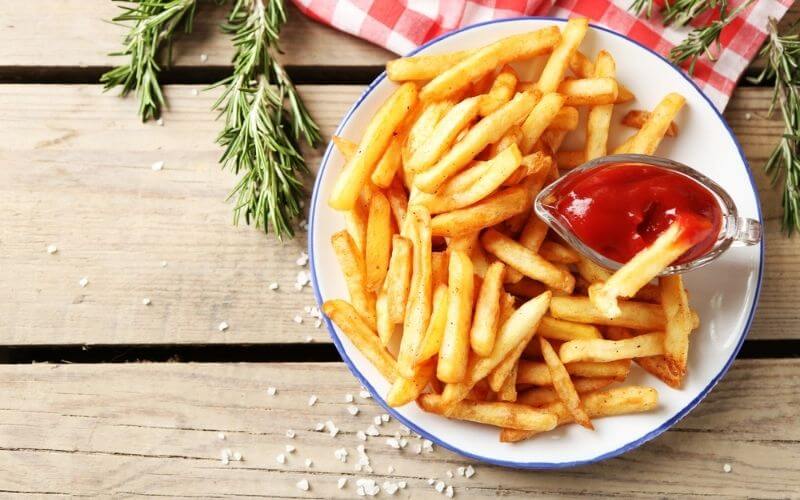Being served as street food since the 1850s, we’ve shared an enduring love affair with french fries. But ever wondered how do professional chefs cut them so perfectly? Dive into this guide to discover the secrets of masterfully slicing potatoes to produce envy-worthy fries.
| Article Highlights | Details |
|---|---|
| Equipment | A dependable chef’s knife (recommend Japanese knives) and real wooden cutting boards are essential equipment. |
| The Best Potatoes | The best potatoes for fries are Russet Potatoes, known for minimum moisture, high fiber and nutrition content. |
| Recommended Oil | High smoke point oils like Canola, Sunflower, Peanut and Corn are recommended. Canola and Sunflower are most preferred due to their neutral taste. |
| Cutting Techniques | Techniques for cutting Classic French Fries and Home Fries are given, with a Mandoline suggested for Restaurant-Style French Fries. |
| Pro Tips | Tips include starch removal by soaking, thorough drying, frying at the correct temperature, blanching and cooling on a rack. |
| FAQs | Addresses queries on Sweet Potato French Fries, reheating fries for crispiness and reasons for lack of crispiness in fries. |
Essential Equipment for Perfect French Fries
Before exploring the actual cutting process, it’s paramount to understand the pivotal role of equipment.
The Right Knife: Your Trusty Companion
Surprisingly, you don’t need an extravagant tool. A dependable chef’s knife is your ally. Japanese knives, known for their meticulous craftsmanship, particularly stand out. Looking for more details? Check our in-depth guide on the best Japanese knives.
Selecting Cutting Boards: Precision Matters
While plastic boards might be light on your pocket, they aren’t professionals’ first choice. Real wooden boards, celebrated for their stability and resilience, ensure a precise cut each time.
Choosing the Best Potatoes for Fries
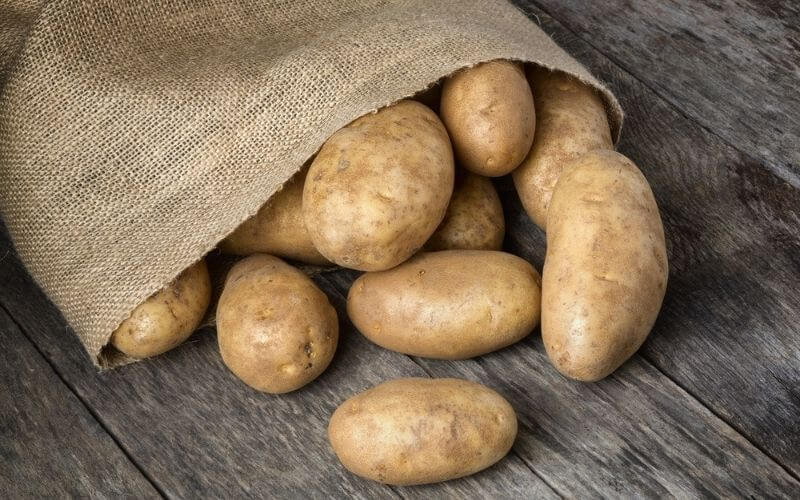
Did you know that not every potato makes the cut for frying? Let’s explore why some fries stand out in taste and texture.
The Champion Potato: Russet Potatoes
Renowned as Idaho Potatoes, these tubers are the gold standard for crispy french fries. Here’s why:
- Minimum moisture: Less oil absorption
- Naturally fluffy post-frying
- High in fiber and nutrition: A health-conscious choice
- Elongated shape for long, straight fries
- Unbeatable taste and crispiness
However, avoid waxy potatoes. Great for gravies, but their high moisture spells disaster for fries.
The Right Oil: A Game Changer
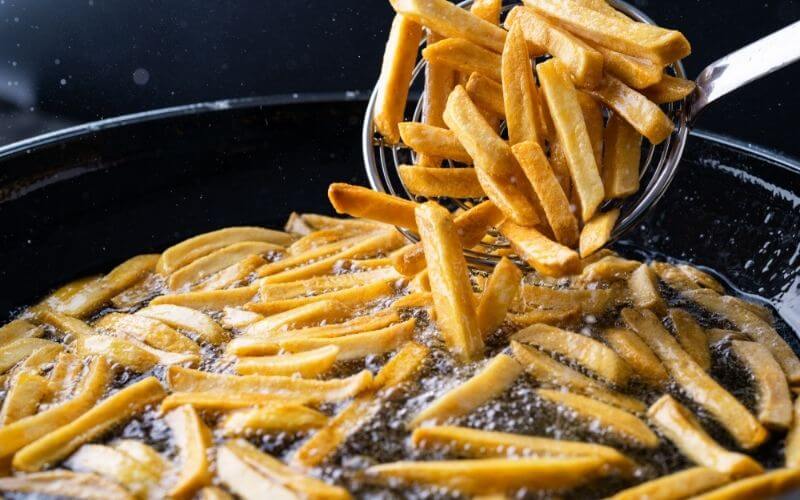
The oil you choose can dramatically steer the taste and texture of your fries.
High Smoke Point Oils: The Best for Frying
These oils ensure your fries remain free from any burnt aftertaste. The frontrunners include:
- Canola oil
- Sunflower oil
- Refined peanut oil
- Corn oil
Neutral oils like canola and sunflower, due to their ability to uphold the genuine flavor of fries, are often the preferred choice.
Techniques to Cut Perfect Fries
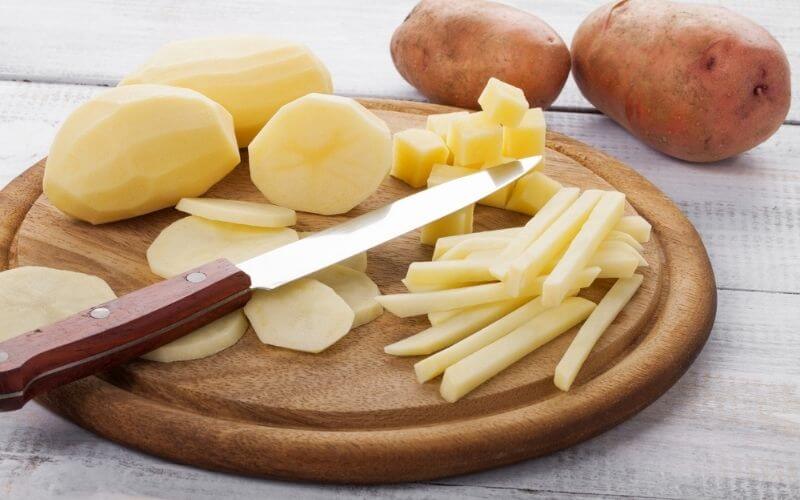
French fries come in a myriad of shapes and sizes. Let’s delve into the cutting techniques for some popular variants.
Classic French Fries
Want that traditional appearance? Here’s how:
- Rinse and peel your potatoes.
- Cut lengthwise into ¼ to ¾ inch slices.
- Stack and slice again for the classic look.
Home Fries: Ideal for Brunches
- Rinse and pat dry.
- Make ½ inch slices lengthwise.
- Cut each stripe into rectangular cubes.
Restaurant-Style French Fries
For those seeking restaurant-grade finesse, a mandoline might be your savior.
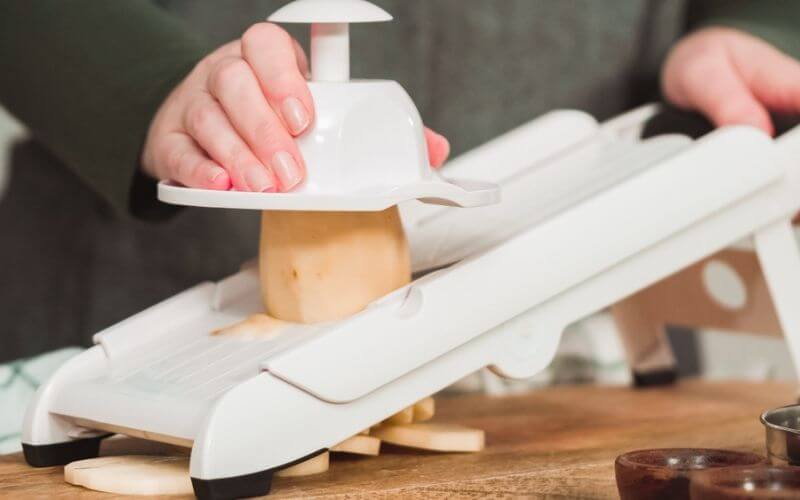
Pro Tips for Impeccable French Fries
Armed with the right technique? Here’s your roadmap to creating standout fries:
- Starch Removal: Soak slices in water for 10-20 minutes. For unparalleled results, a 24-hour soak comes highly recommended by top chefs.
- Drying: Post soaking, use an oven rack for thorough drying.
- Frying: A deep fryer is key. Ensure the oil’s temperature is just right.
- Blanching: Partially cook until soft but devoid of color.
- Cooling: Post blanching, use a rack for cooling.
By adhering to these steps, coupled with the right potato type, cutting method, and frying oil, you’re on the path to french fry brilliance.
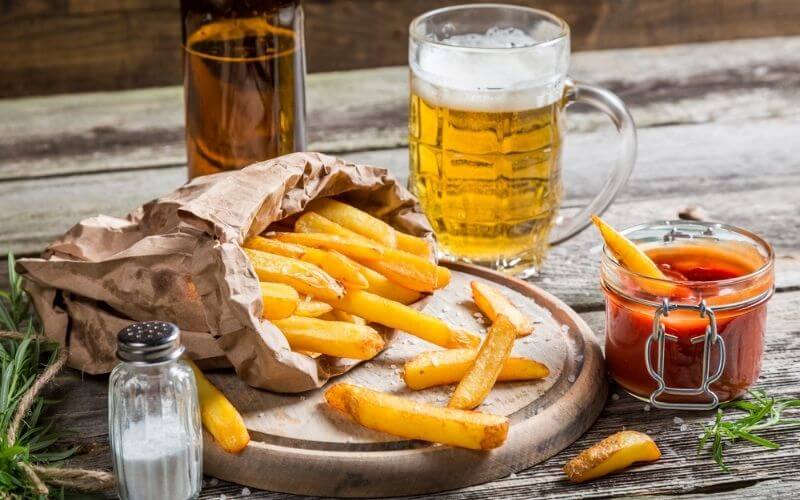
Frequently Asked Questions (FAQs)
Are Sweet Potato French Fries Healthy?
Compared to regular fries, they might be a healthier option. They’re best enjoyed baked or air-fried, and yes, the cutting technique is similar to the one mentioned in this guide.
2. How to Reheat Fries for Crispiness?
To rejuvenate your fries, place them in a baking tray and heat up the oven to 350°F for 7 minutes. An air fryer is also a great alternative.
3. Why Aren’t My French Fries Crispy?
Oil temperature is key. A two-step frying process, starting with moderate and then high heat, ensures crispiness.
Conclusion
French fries might seem straightforward, but achieving the perfect fry involves precision, top-tier equipment, and impeccable ingredients. By embracing the techniques outlined here, you’ll master the art of french fry creation. Whether cooking for yourself or a crowd, these tips guarantee impressed faces all around!
John Bird
With a rich history at the Boat Basin Cafe in Downtown New York, I’ve explored the realms of coffee, BBQ, and grilling. Through this platform, I share my expertise and insights to make your culinary journey exciting.
